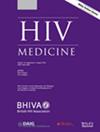Predicting PrEP acceptability and self-efficacy among men who have sex with men in the UK: The roles of identity resilience, science mistrust, and stigma
Abstract
Introduction
Pre-exposure prophylaxis (PrEP) is medication used to prevent the spread of HIV. Populations with increased need of HIV prevention (e.g., men who have sex with men [MSM]) are eligible for free PrEP in the UK. However, HIV surveillance reports indicate stagnated uptake of the drug, alongside increasing rates of HIV acquisition. As such, psychosocial research is needed to explore the social barriers to PrEP uptake. This study aimed to explore the role of identity resilience (i.e., ability to maintain a positive and stable sense of self) as a predictor for PrEP usage. We hypothesized that PrEP self-efficacy (i.e., belief in one's ability to take PrEP) would be positively predicted by PrEP acceptability. We also hypothesized that identity worth and identity continuity (components of identity resilience) would be associated with PrEP acceptability and PrEP self-efficacy. These would be mediated by mistrust in science, PrEP stigma, and perceived risk of HIV.
Methods
In total, 500 MSM who were assigned male at birth, were aged ≥18 years, and did not have HIV participated in an online cross-sectional, psychometric study between June and September 2023. Participants had to be based in the UK but could either be PrEP users or non-users. Structural equation modelling was used to explore a model of best fit to test the hypotheses.
Results
Participants were aged 18–73 years (mean 35.61, standard deviation [SD] 9.95), mostly (91.2%) white, educated to an undergraduate level or above (70.9%), and non-users of PrEP (58.2%). Model fit was satisfactory: χ2 = 4.51, degrees of freedom = 3, p-value = 0.209, comparative fit index 0.997, Tucker Lewis Index 0.972, root mean square of approximation 0.032, and standardized root mean square residual 0.011. Identity worth was positively associated with PrEP self-efficacy. Identity worth was indirectly associated with PrEP acceptability and PrEP self-efficacy. The positive association of identity worth and PrEP acceptability was mediated through lower mistrust of science and lower PrEP stigma but not perceived risk of HIV.
Conclusions
Results indicate that the decision to take PrEP is associated with the constructs of identity worth (i.e., self-esteem, self-efficacy, and distinctiveness) rather than risk-based appraisals alone. The reasons for accessing and using PrEP may no longer be motivated by an inherent perceived risk of HIV acquisition. When trying to increase PrEP uptake, addressing specific parts of identity resilience may be beneficial. For example, therapeutic interventions (e.g., counselling) could include interventions to improve positive sexual identities and self-esteem.


 求助内容:
求助内容: 应助结果提醒方式:
应助结果提醒方式:


